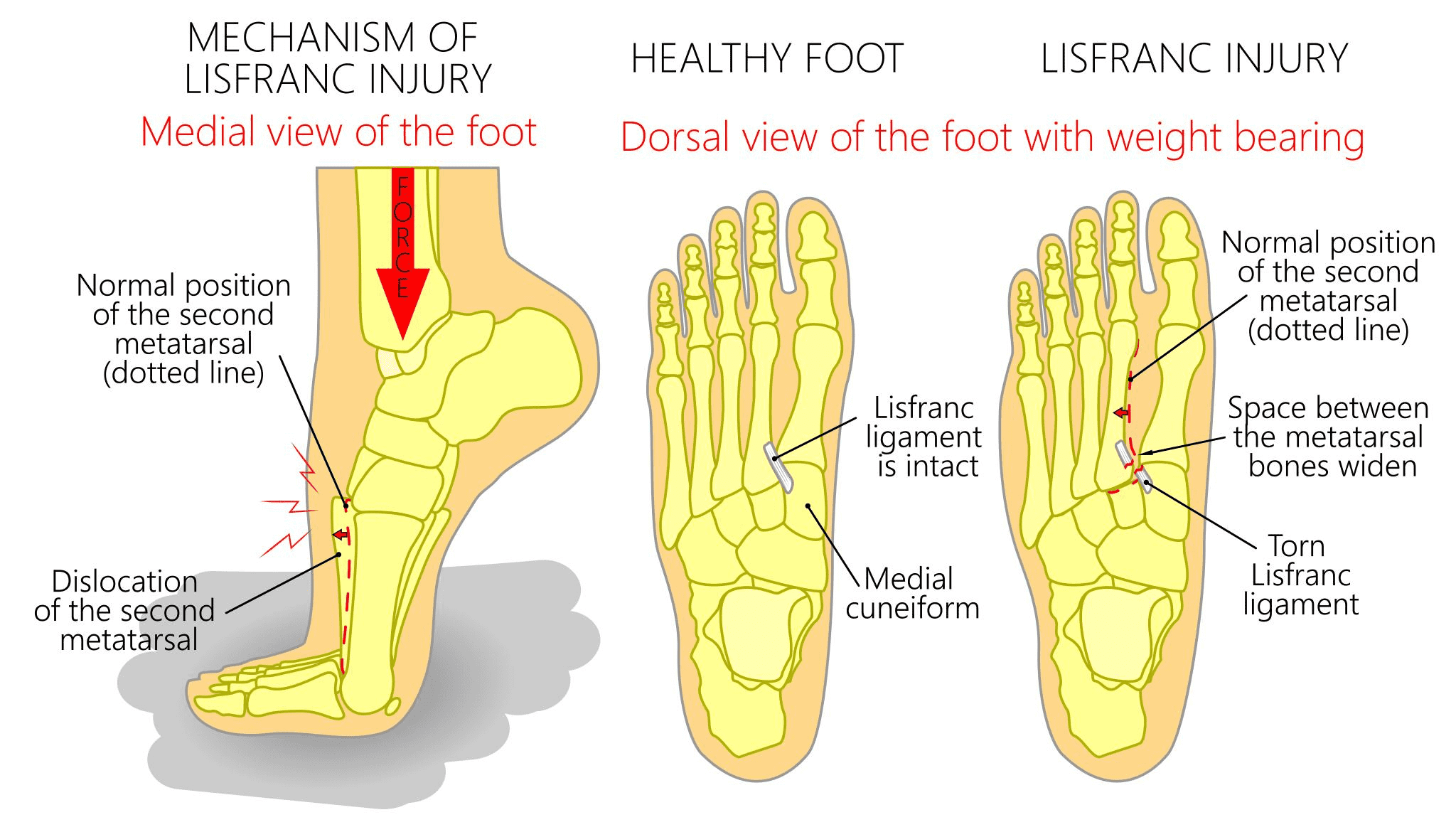Lisfranc Injury
A Lisfranc injury, also known as a Lisfranc fracture, happens when bones break or ligaments tear in the region in the middle of the feet. It can occur in one or both feet.
The midfoot section refers to the area which is the arch. The Lisfranc ligament and the Lisfranc joint are both found in this part of the foot, and can be damaged in a Lisfranc injury. The seriousness of fractures which are sustained in a Lisfranc injury can vary – this will depend on the nature of the injury.
REQUEST AN APPOINTMENT
Causes
A Lisfranc injury can be part of a number of different injuries. One of the most common is a fall which results in a twist of the foot. A Lisfranc injury can also happen when the foot is crushed to some degree while being flexed. Direct trauma, which can be caused by falling from a significant height, is another way in which a Lisfranc injury can occur, typically requiring extensive treatment.
Symptoms
Lisfranc injury symptoms will vary according to the severity of the fracture itself. Among the typical symptoms are swelling and tenderness which can occur in the midfoot area, or the top of the foot. Pain can intensify when performing physical movements such as walking, or standing. Bruising is common on both the top or bottom of the foot and can be a sign that a fracture, rather than a sprain, has occurred.

Treatment
A number of methods of diagnosis are available when ascertaining if a Lisfranc injury has occurred. In some cases, Lisfranc options can be mistaken for less serious sprains, as they happen in a similar location on the foot. The doctor will carry out a physical examination in order to assess the type of injury which has occurred. As well as checking for tenderness, pain and bruising, a number of tests can be carried out including x-rays, MRIs and CT scans.
Where mild Lisfranc injuries are concerned, treatments can be similar to those suitable for a foot sprain. Bed rest, the application of ice, and the elevation of the injured foot are all recognised as effective treatments for mild symptoms. Crutches can also help to relieve pain which is experienced when standing or walking, and in more serious cases casts can be worn.
Surgical procedures to address Lisfranc injuries can include internal fixation, which repositions the foot bones and holds them in place with plates or screws while the foot heals. Another option is fusion treatment, which removes the cartilage around the joints and adds screws, fusing together the bones of the midfoot region. Surgical procedures can require a cast to be worn for six to eight weeks afterwards. This means that crutches may be needed to help to support the body weight. Pins and plates are usually taken out around four to six months following a procedure.
As with all foot surgery it is normal for swelling to persist for some months after surgery and is completely normal. This swelling will eventually completely subside with time and can take up to 12 months but often goes well before this.
Ankle pain can be distressing, especially if you're not sure what options are open to you. If you're wondering if surgery could help you, book an appointment.
* Routine private appointments either face to face or remotely are available
